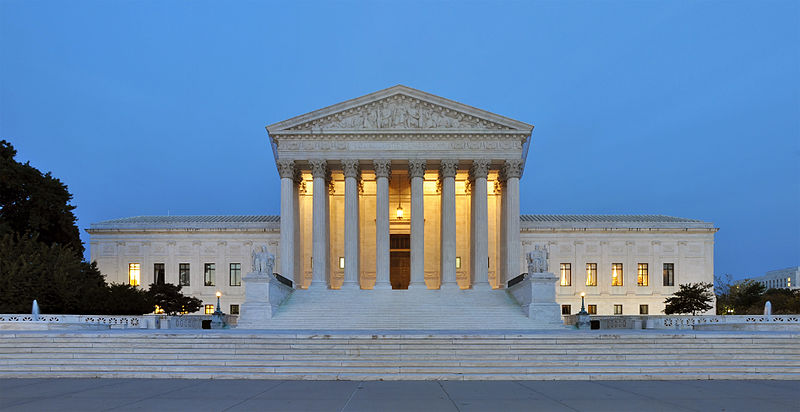
On Tuesday January 20, 2016, The Supreme Court announced that it will review President Obama’s executive action on immigration reform. The case of United States v. Texas will be set for argument in April, making it almost certain that there will be a final ruling by the end of June. A federal lawsuit in Texas and a subsequent injunction prevented the implementation of the President’s immigration program, but now that the highest court in the U.S. has agreed to settle the matter, the fate of one of the President’s most far-reaching executive actions is at stake in addition to more sweeping implications for executive power in general.
When President Obama announced his immigration reform program back in November 2014, he angered many members of the Republican Party, who, in response, brought the issue to a Texas courtroom. Judge Hanen was hand-picked by 26 Republican-nominated states to put the brakes on DAPA (Deferred Action for Parents of Americans and Lawful Permanent Residents), which was created to allow around five million illegal immigrants to “come out of the shadows” and obtain work permits without the threat of deportation. Parents of citizens or of lawful permanent residents are the only ones eligible to apply for the program. An expansion of DACA (Deferred Action for Childhood Arrivals) was also included in the initiative.
There are many thorny legal, social, and policy-related issues at stake in the eventual Supreme Court decision. First is the constitutional one: Did the President act properly within his executive authority to implement such a controversial deportation protection program? From a legal perspective, the answer is yes. Immigration law is a federal law issue and it has always been at the discretion of the president to make necessary changes. In 2012, the Supreme Court (Arizona v. the United States) blatantly stated that under the U.S. Constitution, the federal government has “broad, undoubted power over the subject of immigration and the status of aliens.”

In fact, President Obama is not the first to initiate changes to the legal status of an entire class of people. The Reagan and first Bush administrations provided relief from deportation to spouses and children of those eligible to adjust their status and reside legally within the United States. Reagan and Bush went ahead with these relief programs despite congressional refusal to protect this class of people.
In Texas v. the United States, 26 states took it upon themselves to stop DAPA from being rolled out in 2014 by steering a lawsuit to a conservative judge. In November 2015, the court of Appeals for the Fifth Circuit affirmed the Federal District Court in Brownsville’s ruling. But the issue remains, did these conservative states ever have standing to bring a lawsuit in the first place?
In order to have standing, one must show that they were injured in some way. It follows that the states must go further than proclaim mere disapproval of Obama’s immigration reform policies and in fact demonstrate evidence of actual or potential harm from the policy in question. Texas argued that because it subsidizes driver’s licenses for immigrants with deferred action, with DAPA it will have more licenses to subsidize. This financial injury argument lacks substance, however, since Texas could just stop subsidizing those licenses and the harm would cease. The Supreme Court is likely to act tough on standing, unlike the lower federal courts. According to Spencer Amdur in the New Republic, “if Texas has standing in his case, then states might have standing to challenge almost any policy that loosens enforcement, or gives someone lawful status.”
The standing question leads to the third legal matter that should come up in the Supreme Court’s review: Who has the authority to police deportations on a local level? Immigration policy makers (the federal government, the president, and the Department of Homeland Security) set the rules, but ultimately Immigration and Customs Enforcement (ICE) officers, along with the cooperation and assistance from local police authorities, often act on their own terms with deportations and the detention of immigrants. DHS instructs ICE agents not to deport “low priority” immigrants who do not have a criminal record, but agents do it anyway depending on the political and social climate within their respective communities. For instance, around the time Obama announced DAPA, DHS released a policy memo requiring ICE agents to get a supervisor’s approval before pursuing someone who is not deemed a priority based on DHS instructions. But five months later, almost 70 percent of detention requests targeted immigrants with no criminal record.
One of our clients, Ever Cornejo-Herrera, was one such person who was recently deported despite being a “low priority.” The Detroit ICE office acted in defiance of the President’s orders regarding DAPA eligible candidates, in spirit, by detaining a man (since April 2015) and eventually deporting him (December 2015), even though he had no criminal record and was a loving father to his U.S. citizen children. Deporting him essentially broke apart a hard-working American family that posed no risk to public safety, and further, was not considered worth deporting based on federal protocol.
In this heated political climate and preceding the presidential election in November, summer 2016 is likely to be tumultuous for many immigrants and immigration advocates. Republican presidential candidates, most visibly Donald Trump, have used immigration as a tool to politicize various national sovereignty and security issues that America faces and have successfully injected fear and hate into the rhetoric. It is without a doubt that GOP candidates will continue to undermine the President’s authority with grandiose statements that lack legal merit in order to expose the perceived shortcomings of their opponents. But with the Supreme Court’s decision to weigh in, the scales will be balanced with much needed legal guidance concerning federal law and answers to constitutional law questions. This is a welcome change of perspective that could potentially weed out those candidates, who lack a foundational and necessary understanding of how the executive branch works within our democratic and structured system of governance. After a shaky start-and-stop period that left millions of people in legal limbo for well over a year, the process of repairing a broken immigration system in the U.S. might finally get the greenlight.
